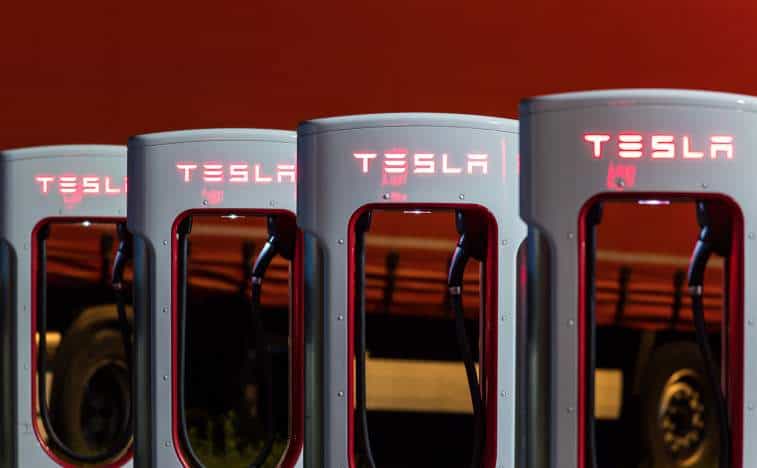
There has never been a better time to develop cobalt-focused mining assets with demand for the battery component predicted to double over the next decade.
According to research house Roskill, the market is expected to expand by 14.5% every year for the next ten, hitting 210,000 tonnes by the end of 2027.
That’s the base case. A more bullish scenario sees total global demand moving to 310,000 tonnes over the next decade.
Elon Musk’s Tesla is often cited as one of the driving forces behind the insatiable demand for the element, which is used in the lithium-ion batteries that power his cars.
And indeed, widespread adoption of green vehicles of all makes and sizes will underpin the next expansion phase.

“Several automotive manufacturers are looking to position themselves to be able to meet particulate matter and carbon-dioxide emissions targets have very publicly began to seek out sources for the cobalt they will soon require,” the Roskill report points out.
“Such moves have bolstered the bullish sentiment in the cobalt market and have helped to elevate prices too.”
But remember, cobalt has uses other than propelling fleets of next-generation sports cars, hatch-backs and saloons.
It is a component of alloys used for aircraft engine parts, while the chemical industry is a big consumer too.
In other words, there’s a base demand for production outside the battery sector.
Keeping the market supplied should be reasonably straightforward over the next five years, Roskill says.
Known and identified opportunities
There are “known or identified” expansion opportunities from existing producers, especially in China, it points out.
Recycling and the use of tailing could also help feed the beast until 2023, on Roskill’s base case outlook for the sector.
“Thereafter, a combination of further expansions from existing miners, new projects, and perhaps the re-start of some operations on care and maintenance will be required if supply is to meet demand,” analyst Jack Bedder said in his report.
“With the vast majority of cobalt mined as a by-product of copper and nickel mining, future mine supply is complicated by the fact that cobalt output is principally governed by demand for, and subsequent supply of, copper and nickel.”
The last 18 months have seen the cobalt price “sky-rocket”. Between 2012 and 2016, it cost just US$13 per pound.
By the final quarter of last year, it had hit US$32 per pound, while the year-high was over US$43.

So as a by-product of zinc, copper or nickel production, cobalt has gone from an afterthought to what in mining parlance would be known as a very valuable production “credit”. At current prices, it has the capacity to significantly affect the economics of a deposit.
Anglo Pacific Group plc’s (LON:APF) acquisition of a royalty stream from the Piauí nickel-cobalt project in eastern Brazil looks particularly well-judged.
AP’s Julian Treger is a shrewd judge of what will make money in the current phase of the natural resources cycle.
He is on the record as being interested in “exposure, and upside, to base materials which have a huge part to play in the energy storage and electric vehicle revolution”.
Amur Minerals Corporation (LON:AMC) in its last drilling report flagged up the cobalt potential of its nickel-copper sulphide deposit in the Far-East of Russia.
Specialist goes all-in
Then there’s also the specialists such as African Battery Metals PLC (LON:ABM) that have gone all-in on cobalt.
Announcing the company’s diversification away from gold in Sierra Leone, chief executive Roger Murphy told investors: “We are bullish on the outlook for cobalt and the other battery metals.
“We believe that the creation of African Battery Metals will provide UK equity investors with exposure to cobalt, which some analysts see as the battery metal with the tightest supply-demand fundamentals.”
The risk of course for ABM is its focus on the Democratic Republic of Congo, the world’s biggest supplier of the mineral, but also a politically unstable jurisdiction, which has the potential to derail the sector’s giants – as Glencore PLC (LON:GLEN) has found to its cost.
Last week, the mining major agreed to write off US$5.6bn of debt in a joint venture with Gecamines, the DRC’s state mining company, to end another legal dispute that threatened its cobalt operations there.
So, why was it willing to do this rather than walk away?
With a newly installed cobalt circuit, its mine will produce 11,000 tonnes of the chemical element this year (10% of current supply), rising to 34,000 tonnes.
In other words, the analysts and executives at Glencore’s headquarters in Zug, Switzerland were only too aware they were sitting on the mineral equivalent of a cash machine.
